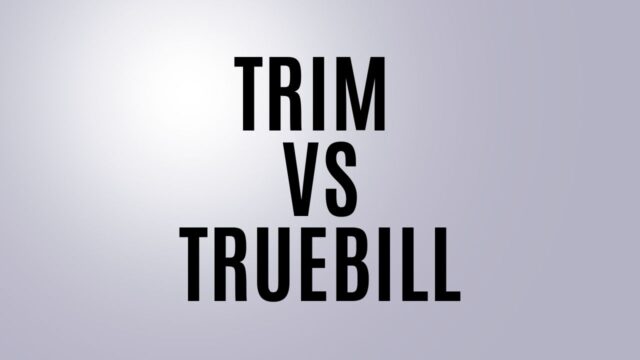
If you find yourself struggling to manage your finances, you’re not alone. In fact, research shows that nearly two-thirds of Americans don’t have a budget plan. Fortunately, technology has made it easier to monitor and track your spending habits. Two popular budgeting tools on the market are Trim and Truebill. In this post, we’ll compare Trim vs Truebill to help you make the best decision for your financial needs.
Overview of Trim
Trim is a budgeting tool that helps you save money on recurring expenses like subscriptions and bills. It analyzes your bank accounts and credit card statements and identifies subscriptions that you’re not using or overpaying for. Trim will negotiate with the company on your behalf to get you a lower rate or even cancel the subscription altogether. In addition, Trim also helps you track your spending and offers a feature to set up a budget plan.
Overview of Truebill
Truebill, like Trim, is a budgeting tool that monitors your bank accounts and credit card statements to help save you money. One standout feature of Truebill is the “Smart Savings” option, which automatically transfers money from your checking account to your savings account based on your spending habits. Truebill also offers a feature to track your spending and set up a budget plan. It also has a bill negotiation feature that will contact companies on your behalf to lower your monthly payments.
Feature Comparison
One significant difference between the two budgeting tools is their fee for services. Trim is free to use, while Truebill offers a free version with limited features and a paid version that costs $4.99 per month.
Another difference is the types of accounts each tool can connect with. Trim can link to bank accounts, credit cards, and investment accounts, while Truebill can connect to bank accounts and credit cards but not investment accounts.
Both tools offer bill negotiation services, but Trim focuses more on subscription services, while Truebill’s negotiation feature is more comprehensive and also applies to cable bills, phone bills, and other recurring expenses.
User Experience
Both Trim and Truebill have user-friendly interfaces and mobile apps that make it easy to monitor your finances on-the-go. Users have reported positive experiences with each tool, although some have criticized Truebill’s customer service response time.
Conclusion:
Choosing a budgeting tool is a personal decision that depends on your financial needs and goals. Trim and Truebill are both great options that offer similar features but differ slightly in their focus and pricing. Consider which tool’s features are most important to you and would help you meet your financial goals before making a decision. By using a budgeting tool, you can take control of your finances and feel more confident about your financial future.


































